Racing through bitterly cold temperatures of minus 20 to minus 25 degrees C. Struggling to breathe through frozen facemasks. Running through loose snow.
These were some of the extreme conditions that Yvonne Elizabeth Chee, 34, had to endure on the last leg of her quest in Antarctica, last month, to complete seven marathons in seven continents.
I spoke to the civil servant about her run in the Antarctic Ice Marathon and also got some tips from her – for those who may want an extreme challenge.
To find out what Paris-based Yvonne said, do read on.
Tell us about your Antarctic Ice Marathon, near the South Pole?
The Antarctic Ice Marathon was definitely the most challenging marathon I’ve ever run. So much about it was unknown/unfamiliar to me – from the weather conditions which varied from -20 deg C to -25 deg C, the katabatic winds, the snow underfoot conditions to even the amount of clothing I had to wear to stay warm.
At the start line of the Antarctic Ice Marathon, a myriad of emotions/thoughts engulfed me – excitement at finally being in Antarctica and starting my seventh continent marathon, uncertainty about how my body would cope with the cold and snow conditions and worry about my knee condition acting up. (Over the past year, I’ve suffered from an inflammation of the Achilles Tendon and a few months before Antarctica, I suffered an inflammation of the patellar tendon in the knee, which forced me to cut down on my training).
For most parts of the race, we ran alone and the only sounds that we heard were those of our shoes crunching the snow beneath our feet. The loneliness hit me between the 26th and 35th km stretch (between two checkpoints of the second loop). What got me through this long stretch and the entire 42.195km was knowing that I had to go on to realise my dream, honour my late-grandmother (Ah Ma) and not disappoint those who have supported me and who have donated towards helping the elderly under the care of the Tsao Foundation. I dedicated each step taken to each dollar donated.
I had been imagining myself crossing the finish line of the Antarctic Ice Marathon in the months leading up to the race and when I was finally approaching the finish line, I was smiling from ear to ear as I knew that I was going to realise my dream. Crossing this line, my thought was “I’ve completed the seven marathons on seven continents. This is for you, Ah Ma”. When I finally calmed down and changed out of my cold and wet gear, I sat down and looked at the medal and broke down in tears.
What was your timing like for the Antarctic Ice Marathon?
I completed the run in 6h 34m 46s and the timing was within my initial target of between six to seven hours. I believe that I could have pushed myself to run faster but I did not/could not do so in order to avoid aggravating my knee injury and also to make sure that I would still be able to run after the Ice Marathon.
The conditions were so extreme that no-one out there was gunning for a personal best. The final time I took was more than two hours slower than my Personal Best of 3h 54m 8s.
What was it like to run in the bitterly cold temperatures?
Running in -20 to -25 deg C conditions presented many challenges.
The most obvious was the need to keep the body, especially the extremities, protected from the cold/direct contact with snow.
While doing so, we also had to ensure that our bodies did not overheat with the layers, as sweat/perspiration exacerbates heat loss. I had to constantly adjust my clothing and zips in order to warm up or cool myself down. I spent about 40min of the race changing my wet clothing and socks at two stations to ensure that I wasn’t caught running with cold clothing.
Runners also had to breathe through facemasks and that proved to be difficult for me. We had to put a facemask or buff over our mouth in order to avoid having our faces freeze up during the race. I struggled with breathing through the facemask as I wasn’t getting enough air. As the buff became wet, it froze up as well which made it more difficult to breathe through.
Apart from breathing problems, many of the runners, myself included, had to figure out how to see through our goggles, which were fogging and freezing up.
Then of course there were the snow underfoot conditions which were erratic as it could quickly alternate between solid packed snow to soft, loose snow. Running through such surfaces sapped up energy quickly.
What did you wear for the race?
I had to wear three layers for my torso (base layer, fleece and windproof jacket), two layers for my legs (base layer and wind pants), two layers of socks, two layers of gloves, one thermal buff for the neck, facemask, thermal hat with ear flaps and goggles.
What was the biggest challenge of taking part in the Antarctic Ice Marathon for you? Why?
The biggest challenge was the fact that I was running a race which I had not trained adequately for, both in terms of the actual training (mileage, long runs etc) and the acclimatisation to the weather.
How did you train for the Antarctic ice Marathon?
That was a burning question in my mind in the lead-up to the race. Richard Donovan, the organiser of the race had, earlier this year, told me to “just train as you would for any other marathon”. I was taken aback by his answer! A piece of advice I received from someone else who had run the Antarctic Ice Marathon was to go run on sand as that was similar to running in snow. I only managed to do so twice but it did make me realise how difficult it would be to run through loose snow. While I didn’t do so myself, a few runners actually ran on treadmills installed in cold storage rooms in order to simulate the cold conditions.
What was the most enjoyable aspect of the Antarctic Ice Marathon?
Being in Antarctica and running a marathon in mainland Antarctica was so surreal and memorable. There is nothing quite like it and will remain etched in my memories for a lifetime.
When and what originally gave you the idea to embark on this quest to run a marathon in each of the world’s seven continents?
The idea of running seven marathons on seven continents was first conceived after I’d completed my second marathon, the New York City Marathon, in late-2008. I didn’t know if it had been done before nor was I sure how I would go about doing it. I did not even dare to talk to many people about it as I thought it sounded ludicrous! Then, I chanced upon a quote by Mark Twain –
“Twenty years from now, you will be more disappointed by the things that you didn’t do than by the ones you did do. So throw off the bowlines. Sail away from the safe harbour. Catch the trade winds in your sails. Explore. Dream. Discover.”
That convinced me to go pursue my dream. A sense of adventure, curiosity, keenness to push my limits coupled with determination continually pushed me towards realising the dream, step by step. I always knew that I would dedicate this effort to my late-grandmother.
I understand that you have run in New York City, Rio de Janerio, Sydney, Paris, Marrakech (Morocco) and Singapore. Which of the marathons in particular, would you consider your most enjoyable race and why?
Apart from the six cities mentioned, I have also run marathons in Brussels, Medoc and Berlin. Out of these ‘conventional’ marathons (excluding Antarctica), the New York City, Paris and Medoc ones are definitely the more enjoyable and/or significant races for me.
The atmosphere in the New York City (NYC) Marathon is electric and you get to run through all five boroughs of the city with fantastic support from the spectators. The NYC Marathon also carries a special place in my heart as the idea to run seven marathons on seven continents was conceived after I had completed this. I’ve run the Paris Marathon twice and it’s a beautiful course bringing you through all the major sights, starting at the Champs-Élysées just in front of the Arc de Triomphe through the Place de la Concorde, the Louvre, the Notre-Dame Cathedral and the Eiffel Tower. The support from the crowds and the sheer beauty of the race course add to the allure of this race.
The Marathon de Medoc is both a full marathon and a wine-tasting tour in Medoc – one of the wine regions of Bordeaux. Runners who are dressed up according to the theme of the race run through over 50 chateaux and instead of drinking water to quench their thirst, there are 21 refreshment points serving wine!
You have intentions to run in the North Pole Marathon next year to complete the Marathon Grand Slam. Now that you have already done the South Pole, how do you feel about taking on this challenge?
I think many runners can identify with me when I say that I’m always looking to challenge myself and pushing my limits further. Having completed the Antarctic Ice Marathon, I am very keen to run the North Pole Marathon next year and continue my fund-raising campaign for the elderly. If/when I do so, I’ll become the first Singaporean lady and possibly the second Asian lady to complete the Marathon Grand Slam and I hope that will inspire many others to pursue their dreams. That being said, while I have self-funded all my other runs thus far, due to the high costs of participation in the North Pole Marathon, I will have to find sponsors to defray the costs of participating in the North Pole Marathon.
Two runners who had done the North Pole Marathon both told me that this run would definitely be more challenging than the Antarctic Ice Marathon. Temperature-wise, it will be colder, at -30 deg C or below. In 2009 and 2011, the temperature was -37 deg C and -32 deg C, respectively.
Earlier, you mentioned that you have dedicated your marathon quest to your late grandmother and to raising funds for the Tsao Foundation in Singapore. Tell us about this.
My grandmother was and remains the strongest woman I’ve known in my life. To have lived through two World Wars and single-handedly raising two children on her own with limited means (Ah Ma’s husband passed away early), hardened her personality and Ah Ma was always strict with us – adopting a no-nonsense approach. She played a key role in bringing me up and part of who I am is a result of Ah Ma’s upbringing. I didn’t get a chance to be a filial granddaughter to her in my rebellious teenage years which were caught up with studies, co-curricular activities and friends and I’ve always regretted this after she passed away when I was 18 years old. Running in honour for her is my way of paying my tribute to her, remembering her and also showing her that I’ve taken on some of her characteristic traits (perseverance, determination and ‘never-say-die’ spirit).
It was quite a natural decision for me to raise funds for the elderly as I truly feel that more needs to be done to increase awareness of the needs of the elderly. I’ve seen seniors who are homeless or left to their own means in their golden years and that saddened me.
Now that your quest is over, how will you continue raising more awareness for the Tsao Foundation in Singapore and what are your plans for this?
The amount raised so far is SGD24,000, with the target being SGD35,000. I will continue this fund-raising campaign through outreach to the general public via my website, social media and other media coverage.
As an experienced runner, can you share some tips for those who are interested to take part in their maiden marathon?
I’m not sure if I can be considered an “experienced runner” but here are some tips:
Get a gait analysis done. Find the right type of shoes to suit your running style, e.g. over or underpronator. I did my gait analysis in Running Lab at Funan Mall in 2008 and found out that I overpronate. A gait analysis could go towards preventing injury and reducing discomfort when you start running more.
Always train for your first marathon. There’s no shortcut to it and one should build up your stamina gradually by increasing your weekly mileage (maximum 10% increase per week is the usual advice) so that your legs get used to running for a longer period of time.
Learn to listen to your body. As you increase the intensity of your training, the body may take some time to get used to it. Watch out for signs of pain and discomfort. Sometimes these signs go away but if they persist, go see a doctor.
As for running the Antarctic Ice Marathon, some tips include:
Train as often as you can on sand as that simulates the snow underfoot conditions. If possible, try to test out your gear and train in cold climates before the race. Start out slow during the race in order for the body to adjust to the conditions.
If you wish to donate to Yvonne’s cause, you can click here.
Click here to read an article on Yvonne Chee by Just Run Lah.

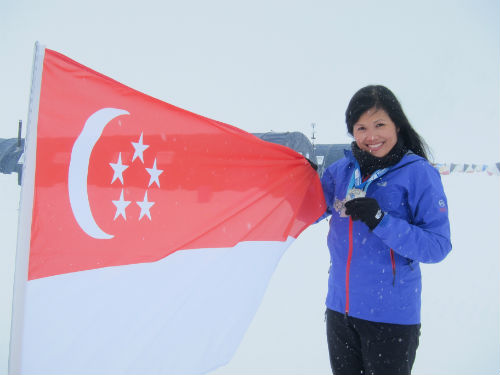
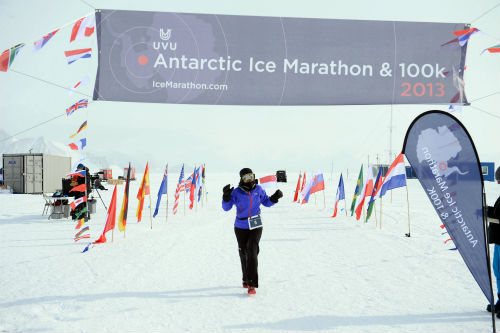
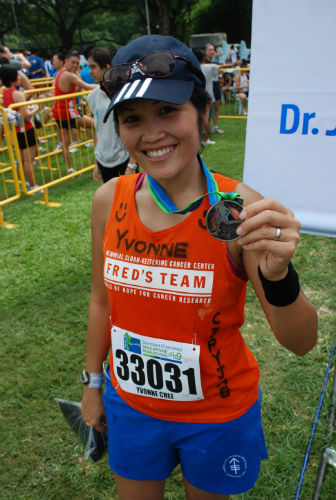
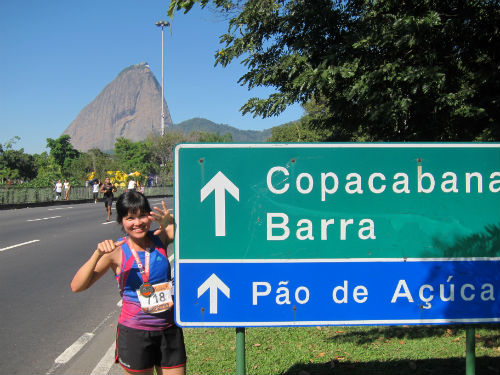
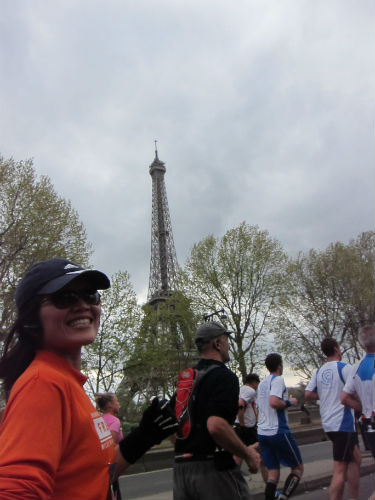
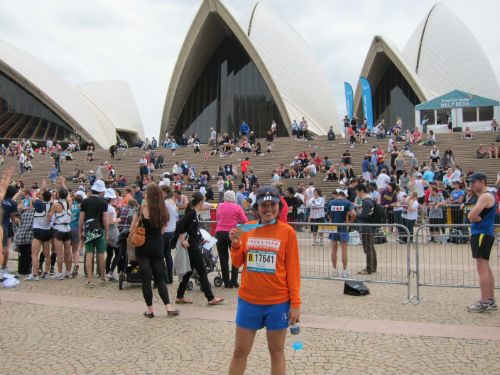
Leave a Comment